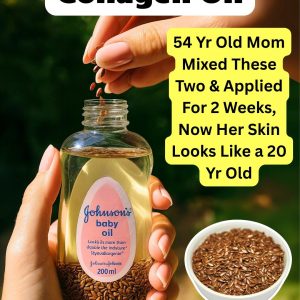
Imagine waking up and feeling like your body no longer responds the way it used to—your legs wobble, your arms feel heavy, and even getting out of bed becomes a task.
This isn’t just aging; it’s often the silent effect of a habit that’s quietly weakening your muscles day by day. This habit speeds up sarcopenia—a condition marked by the progressive loss of muscle mass and strength—often without any clear symptoms until it’s too late.
What is Sarcopenia?
Sarcopenia is a medical condition—not just a part of growing older. While it’s more common among seniors, it can begin as early as your 30s or 40s. Daily habits heavily influence how fast or slow this condition progresses.

10 Daily Habits That Slowly Destroy Your Muscle Strength
Habit 1: Sitting Too Long
Sitting for long periods without breaks sends your body a signal that muscle strength isn’t needed—especially in the legs and back. Even if you exercise, excessive sitting promotes muscle breakdown.
Fix it: Stand and move every 40–60 minutes. Light stretches or short walks make a big difference.
Habit 2: Poor Sleep
Sleep isn’t just for rest—it’s when your body heals and rebuilds muscle. Less than 7 hours of sleep reduces growth hormone production, even if you eat well and work out.
Fix it: Aim for 7–8 hours, reduce screen time before bed, and adopt calming routines like light stretching or reading.
Habit 3: Not Eating Enough Quality Protein
Many older adults unknowingly reduce protein intake. Without enough high-quality protein, muscles can’t repair or grow.
Fix it: Include protein in every main meal. Mix animal sources like fish and eggs with plant-based options like beans and nuts.

Habit 4: Overusing Painkillers
Frequent use of anti-inflammatory meds like ibuprofen and paracetamol may block the body’s ability to repair muscles and absorb nutrients.
Fix it: Use painkillers wisely and explore natural anti-inflammatory options like better diet and movement.
Habit 5: Eating Muscle-Damaging Foods
Sugary drinks, processed meats, white bread, fried foods, and alcohol lead to inflammation, damage gut health, and offer little to no muscle-supporting nutrients.
Fix it: Replace these with real, whole foods that nourish rather than harm.
Habit 6: Avoiding Strength Exercises
Fear of injury or discomfort keeps many from doing resistance exercises, but this type of movement is essential to prevent muscle loss as we age.
Fix it: Do strength training (even light) 2–3 times per week using weights or resistance bands.

Habit 7: Not Drinking Enough Water
Dehydration affects muscle flexibility, recovery, and blood flow. Poor hydration can also worsen bone loss and fatigue.
Fix it: Drink enough water daily. Avoid relying on coffee, soda, or alcohol for hydration.
Habit 8: Eating Too Much Sugar
Sugar increases insulin spikes and chronic inflammation, which blocks muscle recovery and accelerates aging—even if you work out regularly.
Fix it: Cut back on processed sugars. Choose fruits and natural snacks instead.
Habit 9: Skipping Breakfast or Eating a Poor One
Starting the day without proper fuel hurts your metabolism and muscles. Coffee and white bread offer empty calories and no nutrients.
Fix it: Start with protein-rich and fiber-filled foods like eggs, yogurt, whole oats, and avocado.

Habit 10: Skipping Medical Check-ups
This may be the most harmful habit of all. Conditions like vitamin D deficiency, diabetes, or high blood pressure can silently damage your muscle and bone health without symptoms.
Fix it: See your doctor regularly—even if you feel fine. Simple blood tests and check-ups can catch issues early.
Final Thoughts
The slow loss of muscle isn’t just about aging—it’s about habits. From what you eat and drink to how you sleep and move, small daily choices shape your long-term strength. Don’t wait until your body shows signs. Prevention starts now—by fixing the habits that silently weaken you.
Let me know if you’d like this turned into a social media post or infographic-style content.




